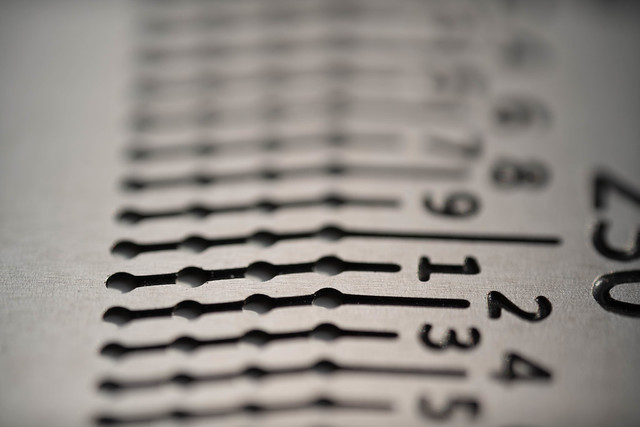… the final conclusion in my last macro article „finally, I will wait for the arrival of the Nikkor Z 105mm Micro S in 2021“. Hence, Nikon did not release any new Z lens the last 7 months! Even though the lens line-up is way behind Sony and Canon mirrorless – what a „§#*+“
Since the (very last) photokina 2019 show in Köln I was aware of Laowa’s exotic lens collection. At their booth I had a look but did not test any lens as I did not have the FTZ for my Nikon Z7 with me. But as there a great videos and articles about macro out there
- Allan Walls great in depth blog and videos
- Johan J Ingles-Le Nobel extreme macro learning site
- Ferdy Christant macro journey – very similar to my
- Renke Bienert web page and advise
- Stewart Wood macro videos – just released his Laowa review
- Matthew Allards test
You can order your Laowa at their venus optics shop in Hong-Kong or as I did here in Germany via the distributor Brenner and tested the Laowa 100mm macro and this Laowa 25mm in the Photo Universal shop under corona rules. Now, let’s start…
How much magnification?
I did my square counting test for measuring the real magnification in 6 different settings: directly mounted on Z7, mounted on bellow at minimum 48mm and maximum 208mm distance, at Laowa lens magnification minimum 2.5 and maximum 5.0.
| Magnification | no bellows | Nikon PB-6 bellow | |
| Lens | @48mm | @208mm | |
| Laowa 25mm f2.8 m=2.5 | 2.6 | 4.6 | 11.2 |
| Laowa 25mm f2.8 m=5.0 | 4.8 | 6.8 | 13.4 |
| compared to | |||
| Nikkor 50mm f1.8D min focus | 0.2 | 1.1 | 4.3 |
| Nikkor 105mm f2.8 min focus | 1.0 | 1.7 | 4.0 |
Although the Laowa does not reach the 5.0 magnification, it shows enough details with 4.8 and reaches up to incredible 13.4 on the bellows. How useful this is I will test later, but getting enough light will be a challenge.
The distance between sensor and the front of lens is 155mm at 1:2.5 and extends to 210mm at 1:5.0. The distance between lens and object is between 40-45mm in all cases and therefore, there is enough space for light positioning.
How much DoF?
The next natural question is, which aperture is appropriate for which situation. I observed defraction with m=2.5 at f8 and above, with m=5.0 it starts already at f5.6. But sharpness is a wicked thing here. The following test will show how subjective measurements can get. I used a ruler with 0.25mm resolution to estimate DoF
f
m=2.5
m=5.0
2.8
4.0
5.6
8
11
16
18
Measuring the real Depth-of-Field (DoF) from the above pictures is not straight forward, as I positioned the rule 45° from the lens plane. To calculate the DoF a we need to correct the measured distance c with cos 45° as depicted in the chart

and compare this to the theoretical DoF calculated based on Zerene table and formula without considering diffraction.
| f @ m=2.5 | f effective | c | DoF measured | DoF Laowa |
| 2.8 | 9.8 | 0.250 | 0.177 | 0.090 |
| 4.0 | 14 | 0.500 | 0.354 | 0.129 |
| 5.6 | 19.6 | 1.000 | 0.707 | 0.180 |
| 8 | 28 | 1.000 | 0.707 | 0.257 |
| 11 | 38,5 | 1.000 | 0.707 | 0.354 |
| 16 | 56 | 1.500 | 1.061 | 0.514 |
| 18 | 63 | 1.750 | 1.237 | – |
| f @ m=5.0 | c | DoF measured | DOF Laowa |
| 2.8 | <0.250 | <0.177 | 0.050 |
| 4.0 | 0.250 | 0.177 | 0.071 |
| 5.6 | 0.500 | 0.354 | 0.100 |
| 8 | 0.500 | 0.354 | 0.143 |
| 11 | 0.750 | 0.530 | 0.196 |
| 16 | 0.750 | 0.530 | 0.286 |
| 18 | 1.000 | 0.707 | – |
Looks like I am too optimistic with DoF wide open. The photo stacking distance will show how much DoF is required to get sharp results.
<more to come – next weekend ;-)>






















Thanks for the excellent description: you get to the heart of your topic without unneccessary framwork. I own the Laowa 25mm ultra macro myself: a very specific but excellent lens.
All the best!
Renke